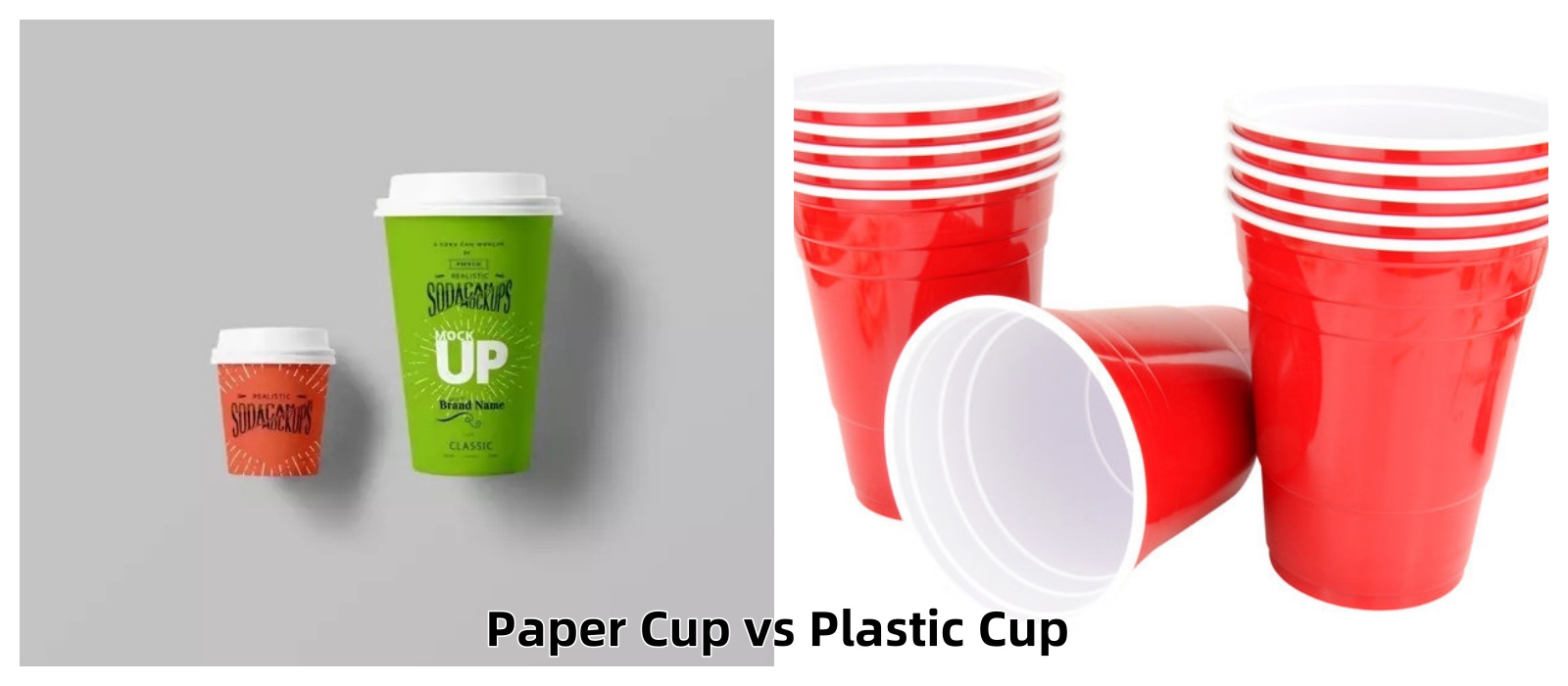
Disposable cups are everywhere. But have you ever wondered which is better for the environment—paper or plastic? The answer isn't as simple as it seems.
Both paper cups and plastic cups offer convenience, but they come with different environmental, economic, and practical concerns. Paper cups are biodegradable but require more resources to produce. Plastic cups are durable but contribute to long-term pollution.
In this post, we’ll compare the pros and cons of paper and plastic cups. You’ll learn about their impact on the environment, cost differences, and which option is truly more sustainable.
History of Disposable Cups
Disposable cups have transformed the way we consume beverages, providing convenience and hygiene. Their evolution spans over a century, beginning with shared drinking vessels and leading to the widespread use of paper and plastic cups today.
EarlyUse of Shared Drinking Vessels
Before disposable cups, people commonly drank from shared glasses or metal vessels at public water sources. These included:
Public water barrels in trains and towns
Faucet-attached communal cups in schools and workplaces
Ceramic or metal mugs at inns and roadside stops
While practical, this method posed serious health risks, as multiple individuals used the same cup, potentially spreading diseases.
The Invention of Paper Cups (Dixie Cup - 1907)
In the early 20th century, the need for sanitary drinking solutions became evident. In 1907, Lawrence Luellen invented the Dixie Cup, a disposable paper cup designed to eliminate the spread of germs. Key facts about its rise:
Originally called the Health Kup, it gained popularity during the 1918 Spanish Flu pandemic.
It became widely used in schools, hospitals, and offices.
The cup's design evolved with wax coatings to hold liquids effectively.
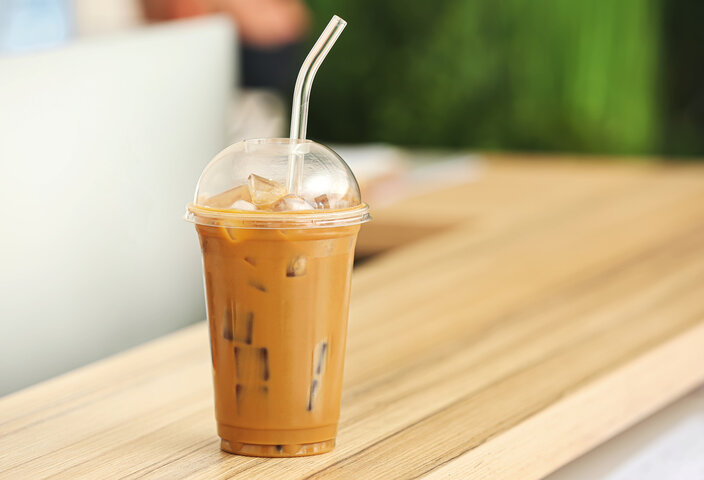
The Rise of Plastic Cups (Solo Cups - 1970s)
While paper cups dominated the early disposable cup market, plastic cups gained traction in the 1970s with the emergence of Solo Cups. These cups were:
Durable and resistant to leaks
Cheaper to mass-produce than paper cups
Popular for parties due to their signature red color and sturdiness
Plastic cups soon became the preferred choice for casual events, fast food chains, and beverage companies.
Evolution of Disposable Cup Usage in Modern Society
Today, both paper and plastic cups are ubiquitous. Their usage has been shaped by:
| Year | Development in Disposable Cups |
| 1907 | Introduction of the Dixie Cup |
| 1940s | Wax-coated paper cups gain popularity |
| 1970s | Solo Cup revolutionizes plastic cup usage |
| 2000s | Increased awareness of environmental impact |
| 2020s | Shift towards biodegradable and recyclable cup alternatives |
With growing environmental concerns, businesses and consumers are reconsidering their choices, leading to innovations such as biodegradable plastic cups and plastic-free paper cups.
Types of Disposable Cups
Disposable cups are available in various materials and designs, each with unique features, advantages, and drawbacks. Understanding these differences helps businesses and consumers make informed choices.
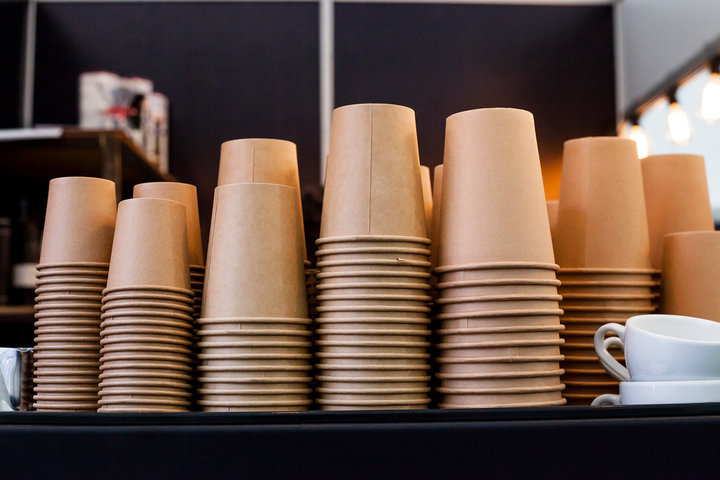
Paper Cups
Paper cups are widely used for their biodegradability and eco-friendliness. However, variations in design and material impact their durability, insulation, and recyclability.
| Type | Features | Common Uses |
| Standard Paper Cups | Thin, lightweight, cost-effective | Cold drinks, water dispensers |
| Insulated Paper Cups | Double-walled or air-pocket design for heat retention | Hot coffee, tea, soups |
| Recycled Paper Cups | Made from post-consumer recycled paper | Eco-conscious consumers, cafés |
| Plastic-Lined Paper Cups | Coated with a thin plastic or wax layer for waterproofing | Restaurants, takeaway beverages |
Key Considerations for Paper Cups:
Pros: Renewable material, biodegradable, safer for health (no BPA concerns).
Cons: Waterproofing often requires a plastic coating, making recycling difficult.
Sustainability Tip: Look for certified compostable or plastic-free paper cups.
Plastic Cups
Plastic cups dominate the market due to their durability, affordability, and lightweight design. However, their long degradation time raises environmental concerns.
| Type | Material | Features | Common Uses |
| Regular Plastic Cups | PP (Polypropylene), PET (Polyethylene Terephthalate) | Transparent, flexible, impact-resistant | Soft drinks, fast food chains |
| VersaLite Cups | Heat-resistant PP | Withstands hot liquids, puncture-resistant | Coffee, tea, specialty drinks |
| Compostable Plastic Cups | PLA (Polylactic Acid) | Biodegradable, made from corn-based plastic | Eco-friendly events, sustainable packaging |
| Foam (Styrofoam) Cups | Polystyrene (PS) | Lightweight, excellent insulation | Hot drinks, food service industry |
Key Considerations for Plastic Cups:
Pros: Durable, low-cost, excellent for insulation and portability.
Cons: Difficult to decompose, microplastic pollution, limited recyclability.
Sustainability Tip: Opt for compostable plastics or reusable alternatives.
Choosing the Right Disposable Cup
When selecting disposable cups, consider the purpose, material impact, and end-of-life disposal. The table below summarizes the best use cases:
| Category | Best for Hot Drinks? | Eco-Friendly? | Recyclability |
| Paper Cups | ✅ (Insulated only) | ✅ (If unlined) | ⚠️ (Plastic-coated ones are harder to recycle) |
| Plastic Cups | ⚠️ (Only heat-resistant types) | ❌ (Most are non-biodegradable) | ✅ (PET/PP are recyclable, but not widely accepted) |
| Foam Cups | ✅ (Excellent insulation) | ❌ (High environmental impact) | ❌ (Difficult to recycle) |
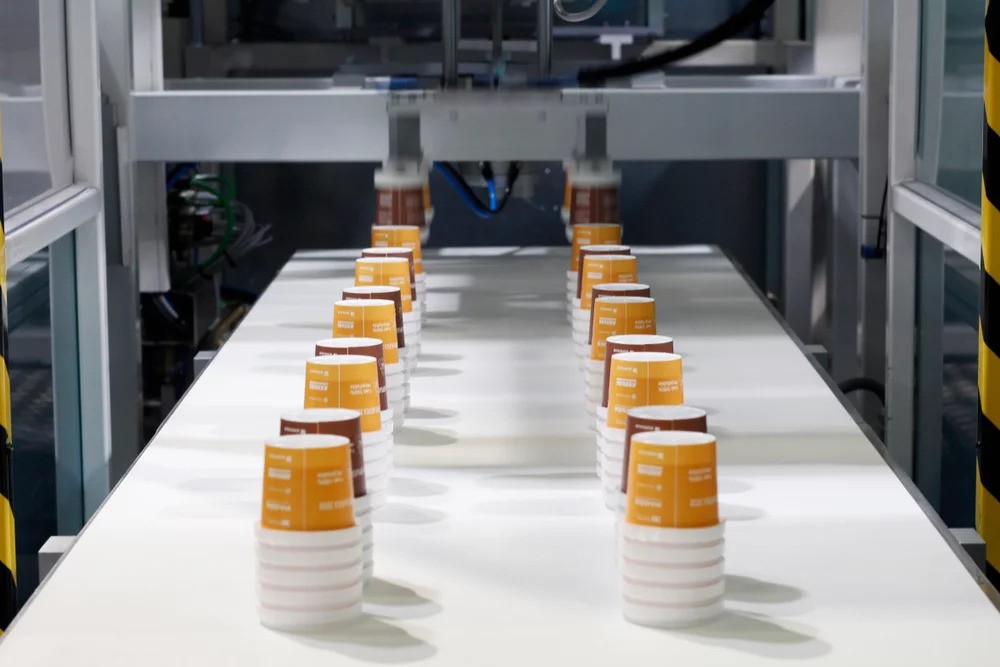
Manufacturing Process & Environmental Impact
The production of disposable cups, whether paper or plastic, has significant environmental implications. From raw material extraction to end-of-life disposal, each type of cup affects deforestation, resource consumption, pollution, and recyclability differently.
Paper Cup Production
Paper cups are often considered the more eco-friendly option due to their biodegradability. However, their manufacturing process presents several environmental challenges.
| Environmental Concern | Impact on Paper Cup Production |
| Deforestation | Millions of trees are cut annually to produce paper cups, reducing carbon absorption. |
| High Energy Use | Paper production requires 300% more energy than in the 1960s, increasing CO₂ emissions. |
| Water Consumption | The paper industry uses large amounts of water for processing and pulp bleaching. |
| Recycling Challenges | Many paper cups are lined with plastic or wax, making separation and recycling difficult. |
Key Takeaways:
Only a small percentage of paper cups are truly recyclable due to plastic linings.
The water footprint of paper cup production is significantly higher than that of plastic cups.
Sustainable alternatives, like plastic-free paper cups, are being developed to reduce reliance on coatings.
More information about Paper Cups Manufacture
Plastic Cup Production
Plastic cups are durable and require less water to manufacture than paper cups. However, they rely heavily on fossil fuels and contribute to long-term pollution.
| Environmental Concern | Impact on Plastic Cup Production |
| Dependence on Fossil Fuels | Made from petroleum-based materials like polypropylene (PP) and polyethylene (PET). |
| Lower Water Usage | Requires less water than paper cups, making it less water-intensive. |
| Persistent Pollution | Plastics can take hundreds of years to decompose, leading to landfill overflow. |
| Recycling Challenges | Only a fraction of plastic cups are recycled; most end up in landfills or oceans. |
Key Takeaways:
Plastic cups generate microplastics, which contaminate ecosystems.
While plastics require less energy to produce, their long-term environmental damage is greater than paper cups.
Some businesses are shifting toward compostable plastics, such as PLA-based cups, to mitigate waste issues.
Environmental Comparison: Paper vs. Plastic Cup Production
| Factor | Paper Cups | Plastic Cups |
| Raw Materials | Trees (renewable, but slow growth) | Petroleum (non-renewable) |
| Water Consumption | High | Low |
| Carbon Footprint | Moderate to high | Lower in production, but higher in waste impact |
| Decomposition Time | 1-5 years | Hundreds of years |
| Recyclability | Difficult due to plastic lining | Limited; depends on plastic type |
Finding a Sustainable Solution
Both paper and plastic cups have environmental drawbacks. However, new innovations, such as biodegradable plastics and plastic-free paper cups, offer promising solutions. Businesses and consumers must weigh resource consumption, recyclability, and waste impact to make the most sustainable choice.

Key Differences in Material Properties: A Practical Comparison
Understanding the material properties of paper and plastic cups is crucial for making informed decisions about their use. Let's examine how these materials perform across different applications and conditions.
Durability and Performance
Material Performance Comparison
| Property | Paper Cups | Plastic Cups |
| Heat Resistance | Up to 185°F | Up to 165°F (standard) / 250°F (VersaLite) |
| Structural Strength | Moderate | High |
| Deformation Risk | High when compressed | Low unless exposed to heat |
| Liquid Retention | Depends on coating | Excellent |
Key Performance Characteristics:
Heat Resistance
- Standard Paper Cups
Suitable for hot beverages
Can maintain integrity up to 185°F
May require double-walling for very hot drinks
Risk of coating degradation at high temperatures
- Plastic Cups
Standard versions deform at high temperatures
VersaLite options offer superior heat resistance
Polypropylene cups maintain structure better
Risk of chemical leaching at high temperatures
Structural Integrity
- Paper Cup Structure
Maintains shape when properly handled
Vulnerable to crushing forces
Weakens when wet for extended periods
Requires careful storage conditions
- Plastic Cup Structure
Higher resistance to crushing
Maintains shape under normal use
Better durability in wet conditions
More flexible and less prone to immediate damage
Temperature Management
Temperature Control Effectiveness
Hot Beverage Performance
Paper Cups:
Single-wall: 15-20 minutes heat retention
Double-wall: 30-40 minutes heat retention
Minimal heat transfer to hands
Gradual temperature decrease
Plastic Cups:
Standard: Not recommended for hot beverages
VersaLite: 25-35 minutes heat retention
Higher heat transfer to hands
More rapid temperature decrease
2. Cold Drink Performance
Paper Cups
Moderate condensation control
Limited cold retention
Potential softening with condensation
Better for short-term use
Plastic Cups
3. Insulation Properties
Insulation Effectiveness Rating (1-5 scale)
| Cup Type | Hot Drinks | Cold Drinks | Overall Rating |
| Single-wall Paper | 3 | 2 | 2.5 |
| Double-wall Paper | 4 | 3 | 3.5 |
| Standard Plastic | 2 | 4 | 3.0 |
| VersaLite Plastic | 4 | 4 | 4.0 |
| Foam | 5 | 5 | 5.0 |
Recycling & Sustainability
Recycling disposable cups is a major environmental challenge. While both paper and plastic cups can technically be recycled, processing difficulties, contamination, and low participation rates hinder sustainability efforts. This section examines the recycling processes and challenges associated with each type of disposable cup.

Sunrise Personalized Logo Eco-Friendly Paper Cups
Paper Cup Recycling Process
Paper cups are often seen as eco-friendly due to their biodegradable nature. However, their recycling process is more complex than it seems.
| Challenges | Impact on Recycling |
| Plastic Linings in Paper Cups | Most paper cups have a thin plastic or wax coating, making it difficult to separate paper fibers for proper recycling. |
| Limited Recycling Facilities | Many recycling centers lack specialized equipment to handle coated paper cups, leading to disposal in landfills. |
| Compostability & Biodegradation Rates | While unlined paper cups decompose in 1 to 5 years, those with plastic linings take much longer and are not fully compostable. |
Key Takeaways:
Only a small fraction of paper cups end up being recycled due to their plastic coating.
Industrial composting is required for effective breakdown, but these facilities are not widely available.
Plastic-free paper cups are emerging as a more sustainable alternative.
Plastic Cup Recycling Process
Plastic cups have a higher recycling potential compared to paper cups, but actual recycling rates remain low.
| Challenges | Impact on Recycling |
| Recyclability vs. Participation Rates | While many plastic cups are technically recyclable, consumer participation and proper sorting remain low. |
| Long Degradation Time in Landfills | Traditional plastic cups take hundreds of years to break down, contributing to long-term pollution. |
| Microplastic Concerns & Ocean Pollution | As plastic cups degrade, they release microplastics that contaminate water sources, harming marine life and ecosystems. |
Key Takeaways:
PET and PP plastic cups are recyclable, but most end up in landfills due to improper disposal.
Microplastics pose a major environmental threat, accumulating in oceans, soil, and even food supplies.
Biodegradable plastics (such as PLA) offer a better alternative, but they require specialized composting facilities.
Sustainability: Which Cup is Better?
| Factor | Paper Cups | Plastic Cups |
| Recyclability | Difficult due to plastic lining | More recyclable but requires proper sorting |
| Decomposition Time | 1-5 years (if unlined) | Hundreds of years |
| Landfill Impact | Lower, but still contributes to waste | High, leading to long-term pollution |
| Compostability | Only if free from plastic coatings | Non-compostable, except for biodegradable alternatives |
Advantages and Disadvantages of Paper and Plastic Cups
Choosing between paper and plastic cups involves considering various environmental, economic, and practical factors. Each type has its own set of advantages and disadvantages, affecting sustainability, usability, and cost-effectiveness.
Advantages of Paper Cups
Paper cups are often favored for their eco-friendliness and branding potential, making them popular in coffee shops, offices, and eco-conscious businesses.
Biodegradability
Paper cups decompose naturally within 1 to 5 years, making them a more sustainable option than plastic cups, which persist for hundreds of years.
Perceived as Environmentally Friendly
Many consumers view paper cups as greener alternatives, even though their plastic coating can complicate recycling efforts and environmental impact.
Safer for Health (No BPA Concerns)
Unlike some plastic cups, paper cups do not contain BPA (Bisphenol A), a harmful chemical linked to hormonal disruptions and health risks.
Customization and Branding Potential
Paper cups allow for high-quality printing, making them ideal for business branding, event promotions, and marketing campaigns.
Disadvantages of Paper Cups
Despite their eco-friendly image, paper cups have several limitations that impact their performance and sustainability.
High Production Cost
Producing paper cups requires more raw materials and energy, making them more expensive than plastic cups in bulk purchases.
Water Absorption Issues Requiring Plastic Coating
Paper cups need a plastic or wax lining to prevent leaks, making recycling challenging and limiting compostability.
Poor Heat Retention
Standard paper cups lose heat quickly, often requiring an additional sleeve or double-wall design for insulation.
Susceptibility to Deformation with Excessive Liquid
If filled with liquid for an extended period, paper cups can weaken, collapse, or leak, reducing their usability compared to plastic alternatives.
Advantages of Plastic Cups
Plastic cups remain a dominant choice due to their durability, affordability, and versatility.
High Durability and Impact Resistance
Plastic cups are less prone to leaks, tears, or breakage, making them ideal for outdoor events, parties, and businesses requiring long-lasting cups.
Better Heat Retention for Hot Beverages
Certain plastic cups, such as heat-resistant polypropylene (PP) cups, retain heat better than standard paper cups without the need for extra insulation.
Lightweight and Cost-Effective for Mass Production
Plastic cups are cheaper to manufacture in bulk, making them a cost-effective option for businesses and event organizers.
Design Flexibility (Transparent, Colored, Customized)
Plastic cups come in various colors, shapes, and transparencies, offering aesthetic appeal and branding flexibility.
Disadvantages of Plastic Cups
Despite their advantages, plastic cups pose significant environmental and health risks.
Difficult to Decompose (Long-Term Pollution)
Plastic cups take hundreds of years to degrade, contributing to landfill overflow and ocean pollution.
Health Risks (BPA, Toxic Chemical Leaching)
Some plastic cups contain BPA or other harmful chemicals, which can leach into drinks, especially when exposed to heat.
Higher Environmental Damage (Microplastics, Non-Biodegradable Waste)
Plastic cups break down into microplastics, contaminating soil, water sources, and marine ecosystems.
Comparison Table: Paper vs. Plastic Cups
| Factor | Paper Cups | Plastic Cups |
| Durability | Prone to tearing, deformation, and leaks | High durability, impact-resistant |
| Heat Retention | Poor, requires extra insulation | Good for some plastic types (e.g., PP cups) |
| Biodegradability | Decomposes within 1-5 years | Can persist for hundreds of years |
| Recyclability | Difficult due to plastic coating | Some types (PET, PP) are recyclable but rarely processed |
| Cost | Higher production cost | More affordable for bulk production |
| Environmental Impact | Perceived as eco-friendly, but requires trees | Causes plastic pollution and microplastic contamination |
| Health Safety | BPA-free, no harmful chemical leaching | Potential BPA and chemical leaching concerns |
| Branding & Customization | Easy to print logos and marketing designs | Available in different colors and transparency |
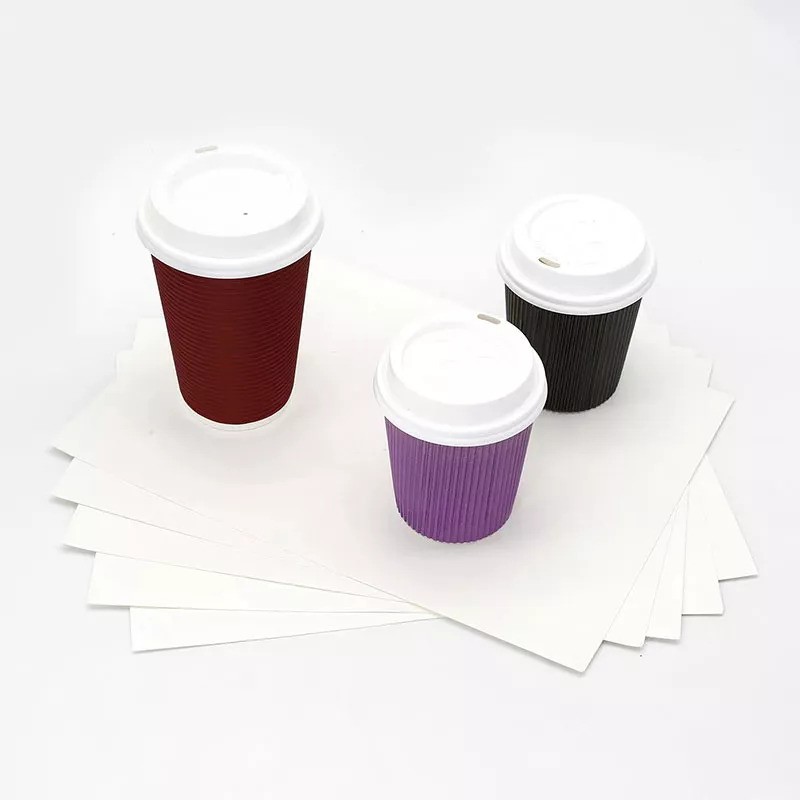
Making the Right Choice
When choosing between paper and plastic disposable cups, businesses and consumers must consider factors beyond convenience and affordability. The right choice depends on usage, sustainability goals, and brand perception. This section explores key considerations for businesses and individual consumers.
Business Considerations
For businesses, selecting the right type of disposable cup impacts cost, customer satisfaction, and brand reputation. Below are key factors to evaluate:
1. Volume Requirements
Businesses that require bulk purchasing must consider the cost per unit. Plastic cups are typically cheaper to produce in large quantities.
High-volume establishments, such as fast-food chains and event organizers, often prefer plastic cups due to their durability and lower leakage risks.
Specialty coffee shops and eco-conscious brands may opt for paper cups to align with sustainable business practices, even at a higher cost.
2. Customer Preferences
Eco-conscious consumers prefer paper cups, associating them with sustainability and biodegradability, even though recycling challenges exist.
Cold beverage consumers favor plastic cups, as they provide better insulation and visibility for drinks like iced coffee or smoothies.
Customers drinking hot beverages often prefer insulated paper cups, as plastic cups may melt or release chemicals when exposed to heat.
3. Brand Image Impact
| Factor | Paper Cups | Plastic Cups |
| Eco-Friendly Appeal | Boosts brand credibility among sustainability-conscious consumers | Viewed as less eco-friendly due to plastic waste concerns |
| Customization & Branding | Easy to print logos and marketing messages for promotional impact | Transparent and flexible design options but limited branding space |
| Customer Perception | Often associated with premium coffee brands and sustainable businesses | Common in fast-food chains, events, and beverage franchises |
| Regulatory Compliance | Increasingly favored due to plastic bans in some regions | Restrictions on single-use plastic drive businesses toward alternatives |
✅ Takeaway: Businesses that emphasize sustainability and premium branding should consider paper cups, while those focusing on cost efficiency and durability may prefer plastic cups.
Consumer Guidelines
Consumers must evaluate practicality, environmental footprint, and cost before deciding between paper and plastic cups.
1. Usage Scenarios
Hot drinks (coffee, tea, and soups): Paper cups with insulation are the best option to prevent burns and retain heat.
Cold beverages (smoothies, iced coffee, soft drinks): Plastic cups offer better condensation resistance and durability.
Outdoor events and large gatherings: Plastic cups are more durable for large-scale events where spills and breakage are concerns.
Sustainable and minimal waste scenarios: Opting for compostable or reusable cups is the most eco-friendly solution.
2. Environmental Impact
| Environmental Factor | Paper Cups | Plastic Cups |
| Biodegradability | Decomposes in 1-5 years (if uncoated) | Takes hundreds of years to degrade |
| Recyclability | Difficult due to plastic lining | Can be recycled but low participation rates |
| Carbon Footprint | Requires high energy and water for production | Made from fossil fuels but uses less water |
| Pollution Risk | Less long-term pollution but contributes to deforestation | Leads to plastic waste and microplastics in oceans |
✅ Takeaway: If the priority is eco-friendliness, plastic-free paper cups or reusable alternatives are the better choice. However, plastic cups outperform paper in durability and cold beverage use.
3. Cost Effectiveness
Paper cups are typically more expensive due to the cost of raw materials, production, and additional insulation layers.
Plastic cups have a lower cost per unit, making them more budget-friendly for large-scale use.
Bulk buyers should factor in storage and transportation—paper cups are lighter but require more storage space, while plastic cups are compact but contribute to plastic waste.
✅ Takeaway: Plastic cups are more affordable for bulk purchases and event use, while paper cups are better for small-scale, eco-conscious consumption.
Conclusion
Paper and plastic cups have distinct advantages and disadvantages in durability, cost, and sustainability. Paper cups are biodegradable but often require plastic coatings for waterproofing. Plastic cups are durable and cost-effective but contribute to long-term pollution.
Environmental impact varies. Paper cups consume more energy and water, while plastic cups generate microplastic pollution and take centuries to decompose. Recycling challenges exist for both.
For sustainability, plastic-free paper cups or reusable options are the best choices. Businesses should align with branding and regulations, while consumers must balance cost, convenience, and eco-friendliness.
Contact Sunrise to learn more about their Paper Cups. Made from food-grade materials, they are safe for various uses. Available in different sizes and designs. Email **info@sunriseproduct.cn** or visit their website for details.






























